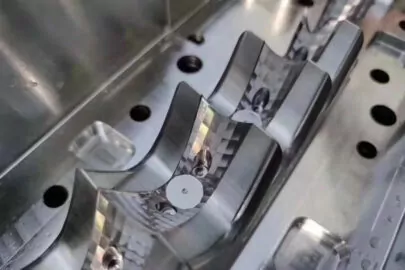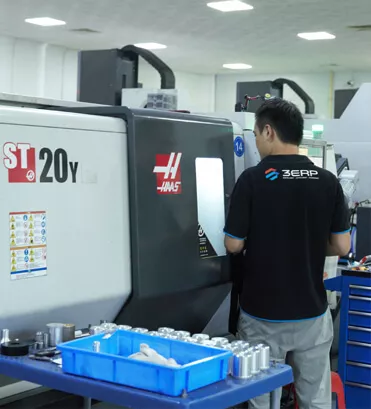Explore the Benefits of CNC Milling Factory for Electronics Components

Introduction to CNC Milling in Electronics Manufacturing
The rapid evolution of electronics demands precision, efficiency, and adaptability in component manufacturing. As devices become more compact and complex, the need for advanced production methods is more crucial than ever. One technology at the forefront of this revolution is CNC milling. At Xilici (XLC), a leading name in electronics manufacturing, we leverage state-of-the-art CNC milling factories to deliver unmatched quality and innovation in electronics components.
The Fundamentals of CNC Milling for Electronics
CNC (Computer Numerical Control) milling is a subtractive manufacturing process that utilizes computer-controlled machines to precisely remove material from a workpiece. This method is particularly valuable for producing intricate electronic parts with tight tolerances, such as enclosures, heat sinks, connectors, and custom PCB housings. The accuracy and repeatability of CNC milling make it an indispensable tool in the electronics industry.
How CNC Milling Works in Electronics Manufacturing
- Design and Programming: Engineers use CAD software to design the component and generate a CNC program.
- Material Selection: Suitable substrates such as aluminum, plastics, or composites are chosen based on the application.
- Milling Process: The CNC machine follows programmed instructions to cut, drill, and shape the material into the desired form.
- Quality Inspection: Precision measuring tools ensure each part meets rigorous standards.
Key Benefits of CNC Milling Factory for Electronics Components
Partnering with a CNC milling factory like Xilici (XLC) brings a multitude of advantages to electronics component manufacturing. Here are some of the standout benefits:
1. Unmatched Precision and Consistency
CNC milling machines are renowned for their precision, capable of achieving tolerances as tight as a few microns. This is essential for electronics, where even minor deviations can impact performance or cause assembly issues. At XLC, our advanced CNC systems ensure every batch of components is identical, eliminating variability and ensuring seamless integration into final products.
precision machining
production mold making
3d printing
5 axis cnc machining
2. Enhanced Efficiency and Scalability
Time-to-market is a critical factor in the electronics sector. CNC milling allows for rapid prototyping and efficient production runs, accommodating both small batches and large-scale orders. Xilici’s factories are equipped to scale production as needed, supporting clients from prototype to mass production without compromising lead times or quality.
3. Design Flexibility and Customization
Modern electronics often require custom solutions tailored to specific applications. CNC milling supports complex geometries, intricate cutouts, and unique features that traditional methods may struggle to achieve. XLC’s engineering team collaborates closely with clients to turn innovative ideas into reality, offering unparalleled customization options.
4. Material Versatility
CNC milling is compatible with a broad range of materials, including metals, plastics, and composites. This versatility enables Xilici to cater to diverse industries, from consumer electronics to automotive and medical devices. Our expertise in material selection ensures optimal performance, durability, and cost-effectiveness.
5. Cost-Effectiveness and Reduced Waste
While initial setup costs for CNC milling can be higher than manual methods, the long-term savings are significant. Automated processes reduce labor costs, minimize errors, and optimize material usage, leading to lower per-part costs. XLC’s commitment to lean manufacturing further reduces waste, benefiting both clients and the environment.

Industry Trends: CNC Milling and Urethane Casting in Electronics
The electronics manufacturing landscape is continuously evolving, with emerging technologies and materials shaping the future of component production. One notable trend is the integration of CNC milling with other rapid prototyping methods, such as Urethane Casting.
Urethane Casting: Complementing CNC Milling
Urethane Casting is a process where silicone molds are used to create high-quality prototypes and low-volume production parts from polyurethane resins. This method is ideal for producing functional prototypes or bridge production before full-scale manufacturing. In China, the demand for Urethane Casting China services has surged, thanks to the country’s robust manufacturing ecosystem and competitive costs.
- Rapid Prototyping: Urethane casting enables fast turnaround for prototype parts, allowing electronics companies to test designs before committing to expensive tooling.
- Material Simulation: The process can simulate the properties of final production materials, giving engineers confidence in their designs.
- Cost-Effective for Low Volumes: When combined with CNC-milled master patterns, urethane casting is a cost-effective solution for limited production runs.
At Xilici, we integrate CNC milling and urethane casting to offer comprehensive prototyping and production solutions. By leveraging both technologies, clients benefit from the precision of CNC-milled master patterns and the flexibility of urethane casting for short-run components.
Real-World Applications: CNC Milling in Action at XLC
Xilici’s CNC milling factories have played a pivotal role in the development of cutting-edge electronics components. Here are some examples of how CNC milling is transforming the industry:
| Component | Application | Benefit of CNC Milling |
|---|---|---|
| Aluminum Enclosures | Consumer Electronics | High precision, superior surface finish, and EMI shielding |
| Custom Connectors | Telecommunications | Complex geometries, tight tolerances, and rapid prototyping |
| Heat Sinks | Power Electronics | Efficient thermal management and material versatility |
| Sensor Housings | Automotive | Durability, weather resistance, and design flexibility |
Future Outlook: The Role of CNC Milling in Smart Manufacturing
The future of electronics manufacturing is intertwined with smart technologies and automation. CNC milling factories like Xilici are embracing Industry 4.0 principles, integrating IoT sensors, real-time data analytics, and AI-driven process optimization. These advancements enable predictive maintenance, enhanced quality control, and seamless supply chain integration.
Moreover, the synergy between CNC milling and complementary processes such as Urethane Casting and additive manufacturing is expected to drive further innovation. As product life cycles shorten and customization becomes the norm, flexible manufacturing solutions will be key to staying competitive.
Why Choose Xilici (XLC) for Your Electronics CNC Milling Needs?
- Expertise: Decades of experience in electronics manufacturing and CNC machining.
- Technology: State-of-the-art CNC milling equipment and integrated prototyping services.
- Customization: Tailored solutions to meet unique project requirements.
- Quality Assurance: Rigorous inspection and testing for every component.
- Global Reach: Serving clients worldwide, with a strong presence in China’s manufacturing hub.
Whether you need rapid prototyping, low-volume production using Urethane Casting, or high-precision CNC-milled electronics components, Xilici (XLC) is your trusted partner. Our commitment to innovation, quality, and customer satisfaction sets us apart in the competitive world of electronics manufacturing.
Conclusion
CNC milling factories have become the backbone of modern electronics manufacturing, offering unparalleled precision, flexibility, and efficiency. By partnering with a leader like Xilici (XLC), companies gain access to cutting-edge technology, expert engineering, and a comprehensive suite of production services—including Urethane Casting and Urethane Casting China solutions. As the industry continues to evolve, CNC milling will remain a vital tool for driving innovation and delivering the next generation of electronic devices.
